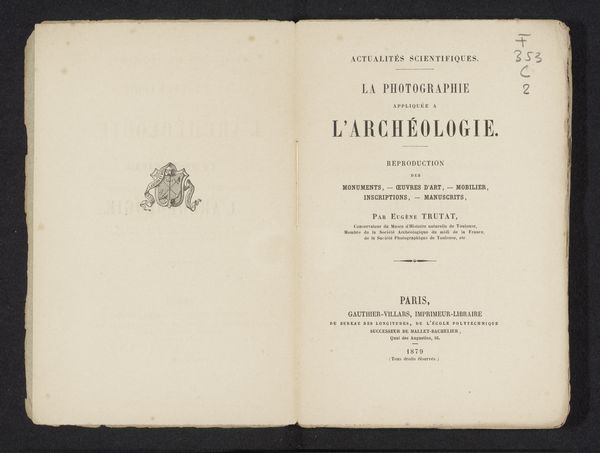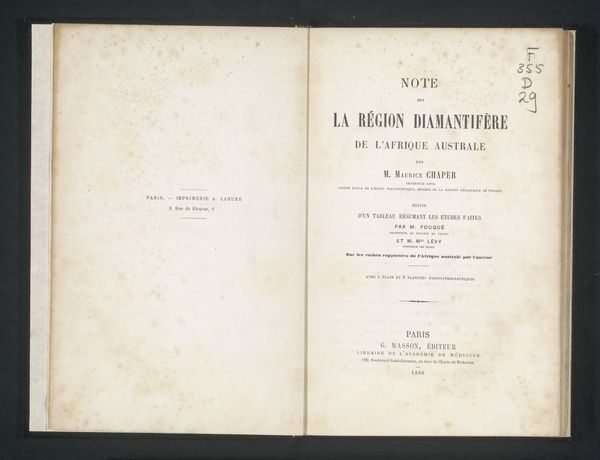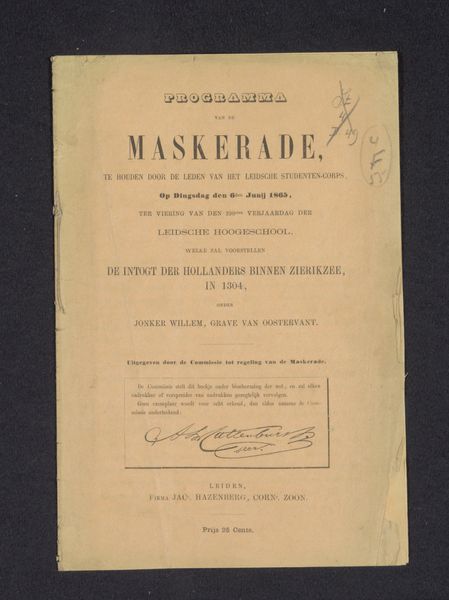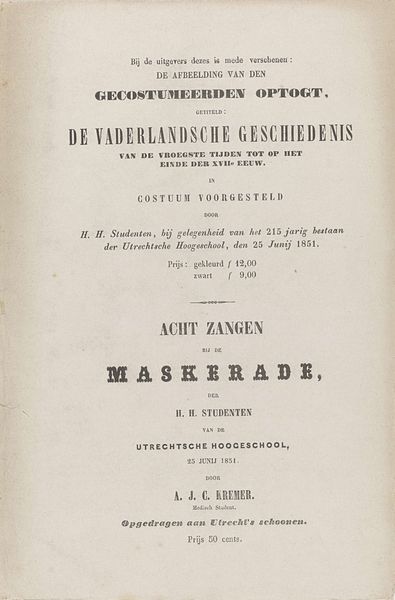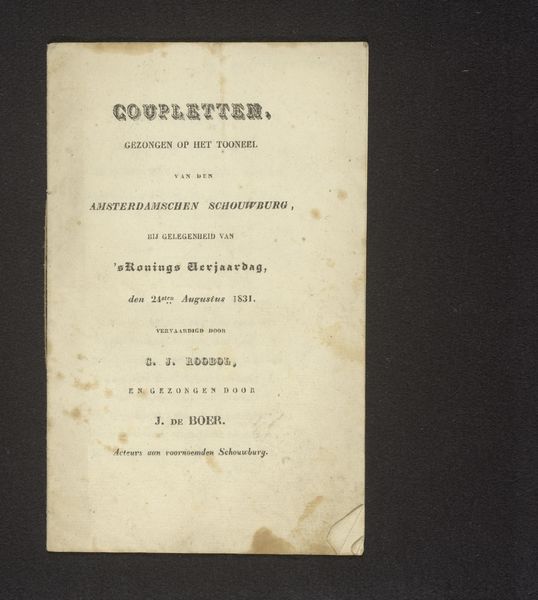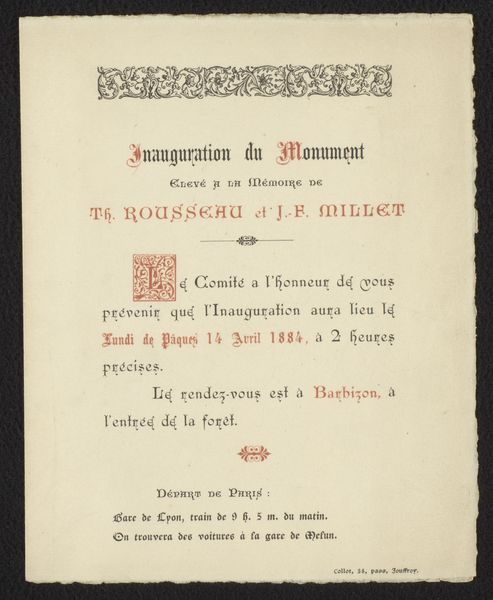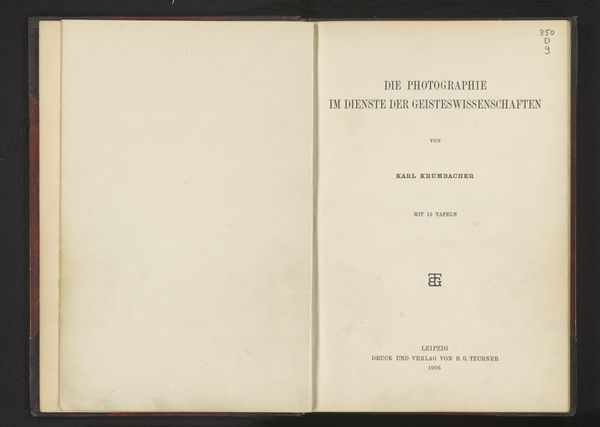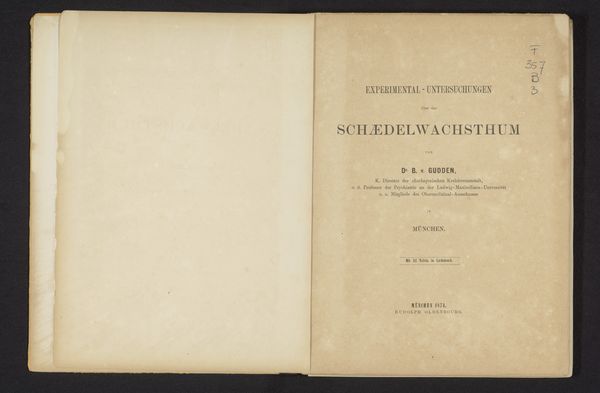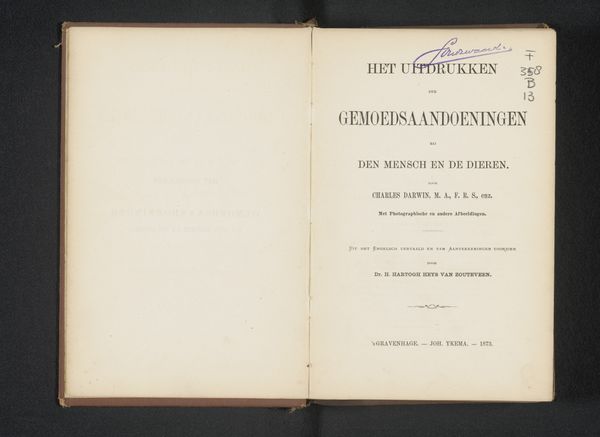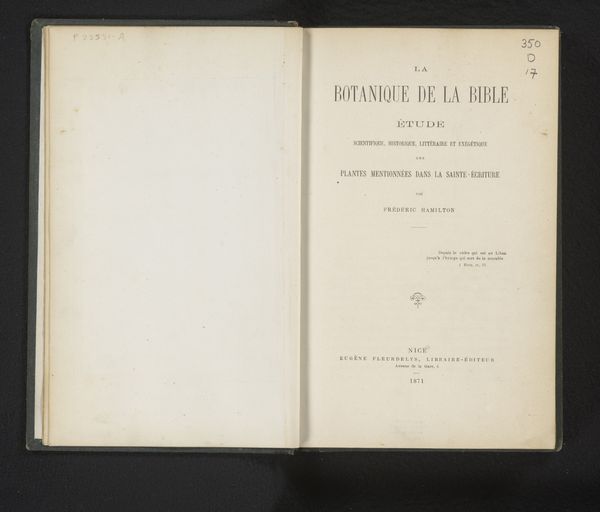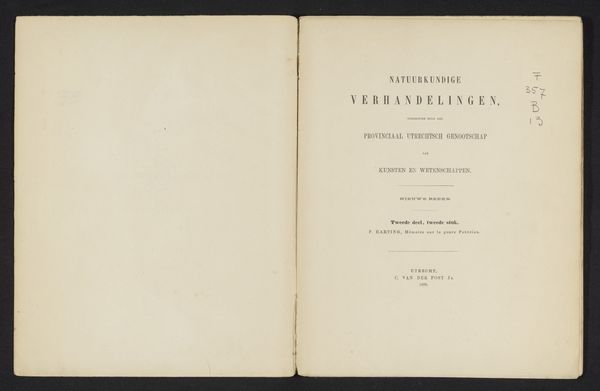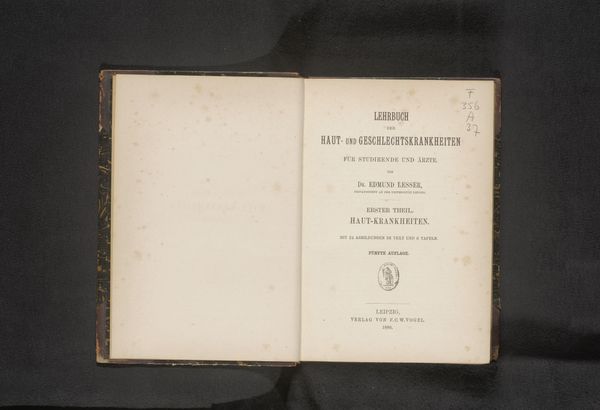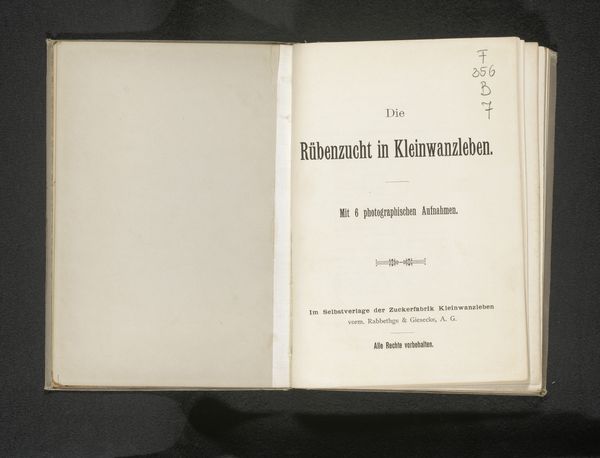
Boekje bij de prentenreeks van de maskerade van de Utrechtse studenten, 1851 1851
0:00
0:00
print, typography, poster
#
16_19th-century
# print
#
typography
#
poster
Dimensions: height 230 mm, width 153 mm
Copyright: Rijks Museum: Open Domain
Curator: This is a book associated with a series of prints by F.W. Boom, titled "Boekje bij de prentenreeks van de maskerade van de Utrechtse studenten, 1851," made in 1851. It’s currently held at the Rijksmuseum. Editor: My first impression is how stark it appears; a rather muted color palette and seemingly severe typography evoke a feeling of austere formality. It's clearly meant to be informative, but there’s a certain solemnity to it, isn’t there? Curator: I’d agree with that assessment. Observe how the layout utilizes distinct horizontal blocks and varied fonts to organize textual information. This structured arrangement draws attention to its essential elements—the masquerade itself, the organizers' names, and even the price. Editor: And that price is “een gulden”, which positions this firmly within the social and economic context of the mid-19th century. Maskerades, especially those put on by student societies, often had complex political undercurrents related to class and identity, didn't they? To what extent were students a part of wider independence and reform movements in the Netherlands during that era? Curator: I’d argue that such contexts are outside the immediate concerns of the visual impact and layout. Consider how the artist utilizes white space. See how it shapes the reader’s experience. Its typographic choices, while appearing severe to a modern eye, convey a sense of order befitting its time. Editor: True, but that order also points to societal structures. What sort of students would have been able to participate in and attend such a masquerade? What social functions did it play, and who was excluded? How might we read "MASKERADE" as an aspirational statement about performative expression for particular people who at the time held political and societal power? Curator: A provocative idea. On a formal level, however, I notice the flourish at the very bottom with the quote: "Men geliere de achterzijde van den omslag te lezen". It speaks to a cleverness beyond the seemingly functional elements, inviting engagement and discovery. Editor: That final invitation, along with your earlier close reading, makes me see fresh opportunities here too. I hadn’t focused closely on it initially. Considering masquerades from a purely materialist and art-historical perspective allows new narratives to develop!
Comments
No comments
Be the first to comment and join the conversation on the ultimate creative platform.
